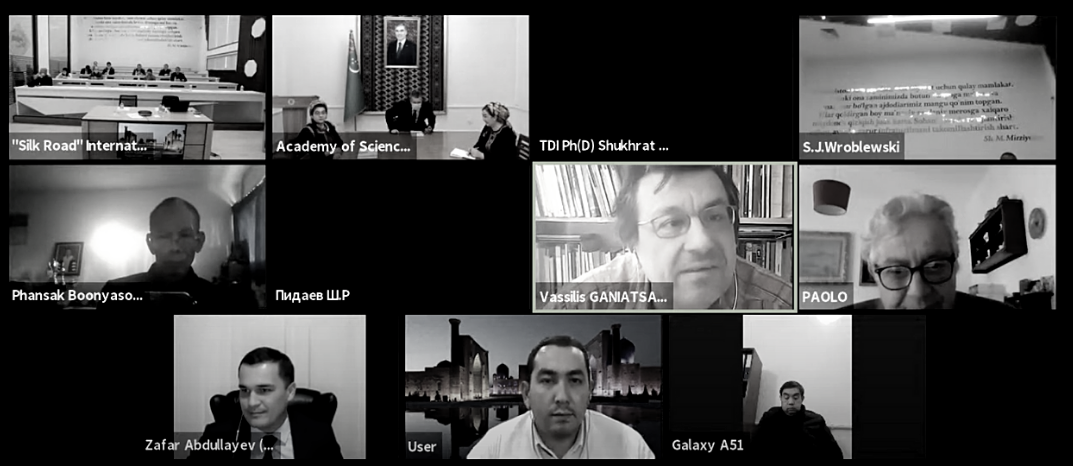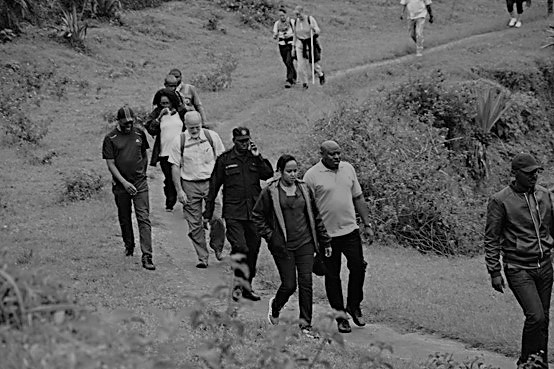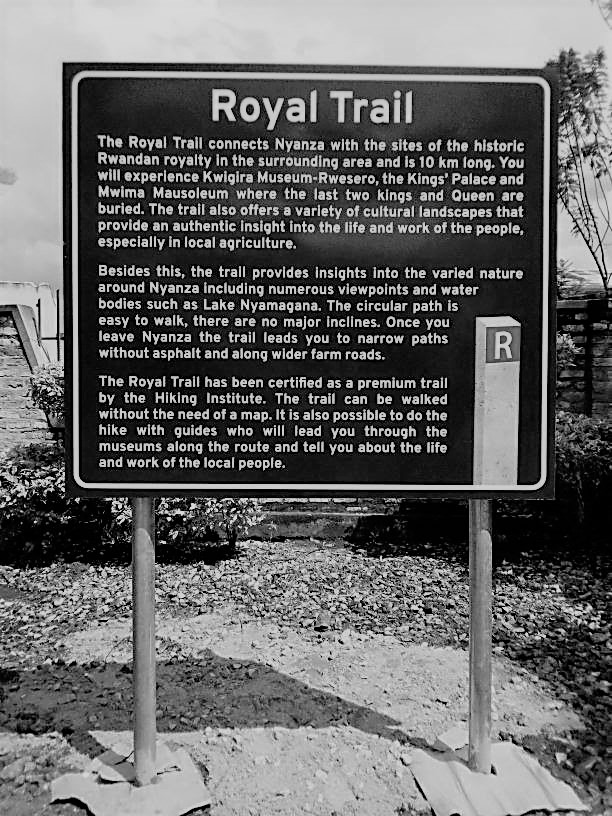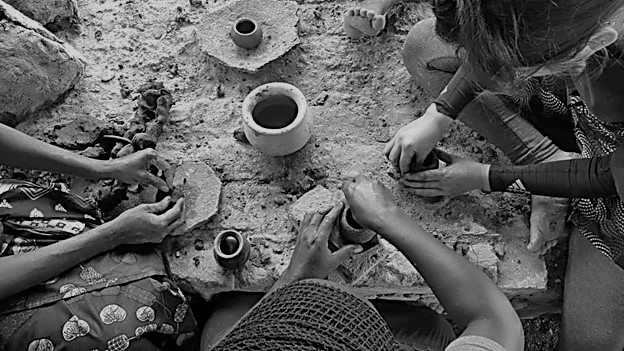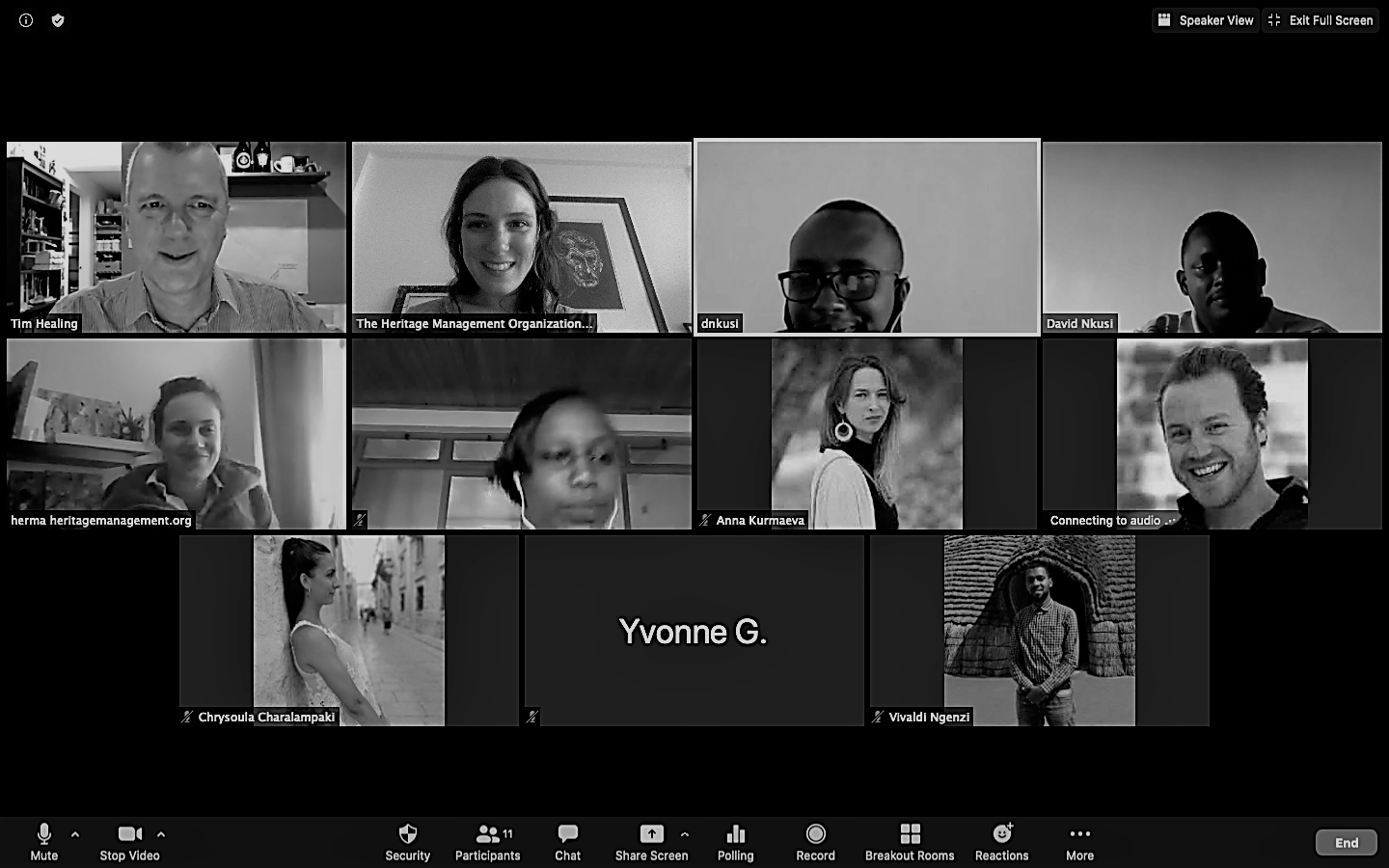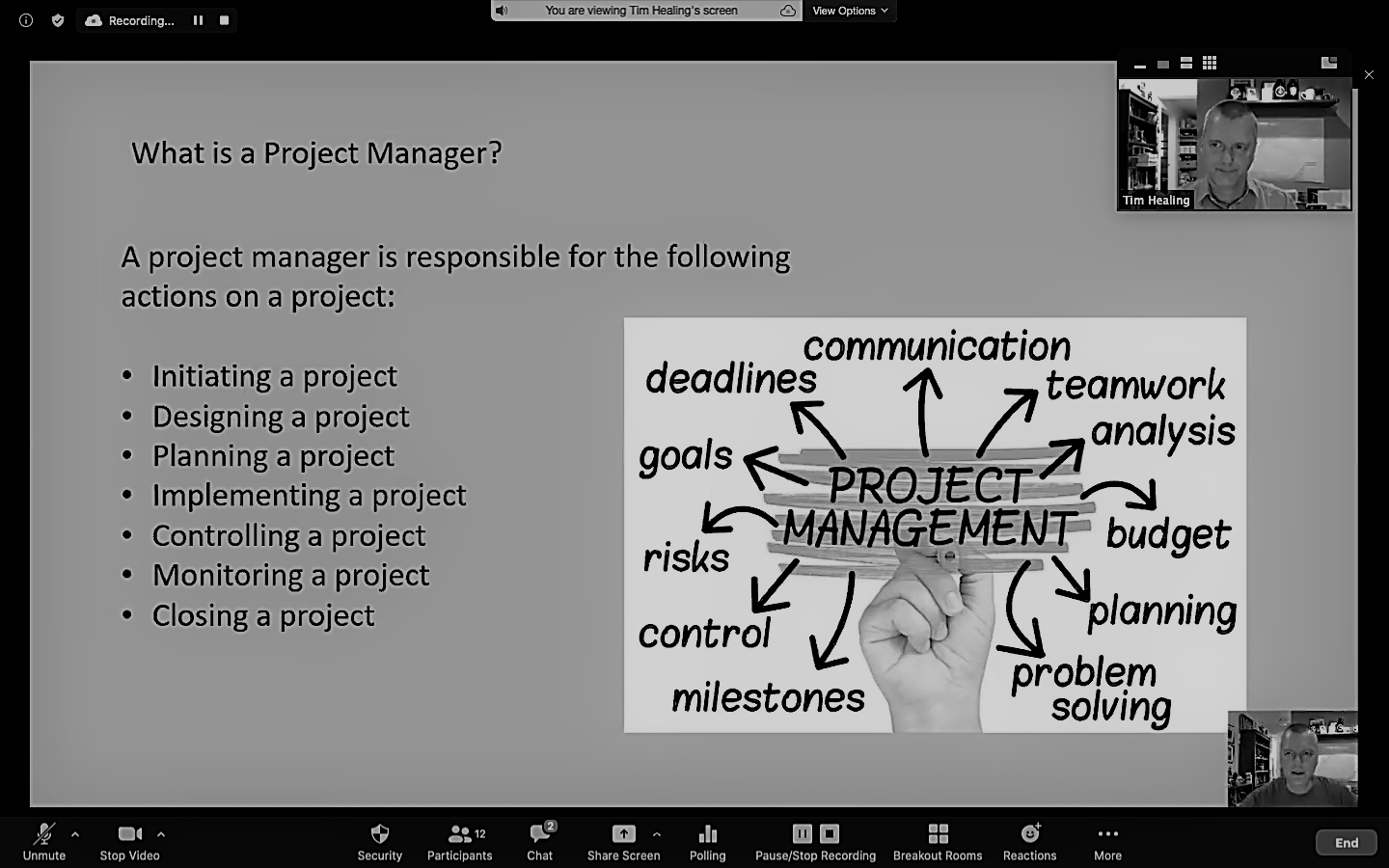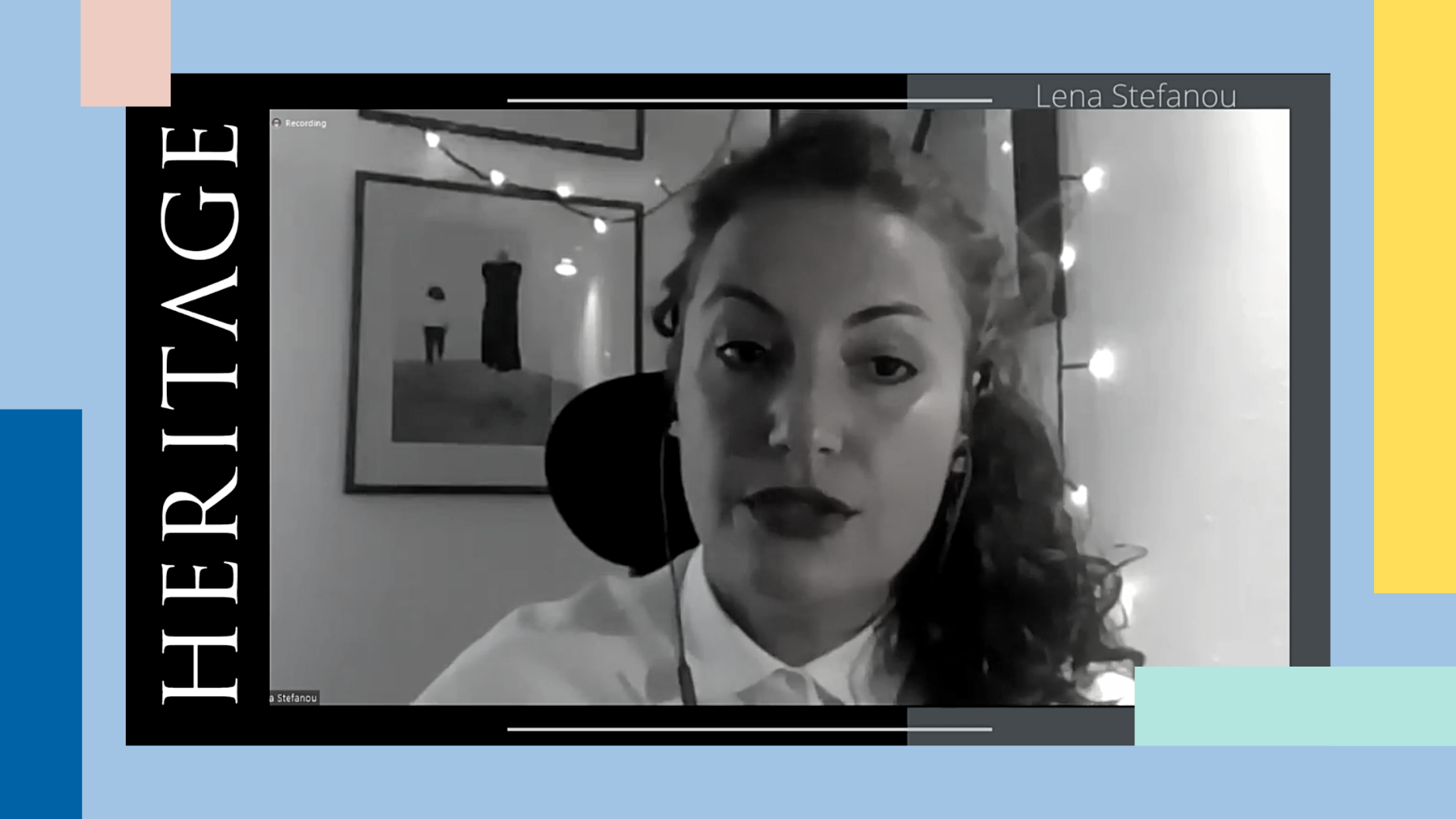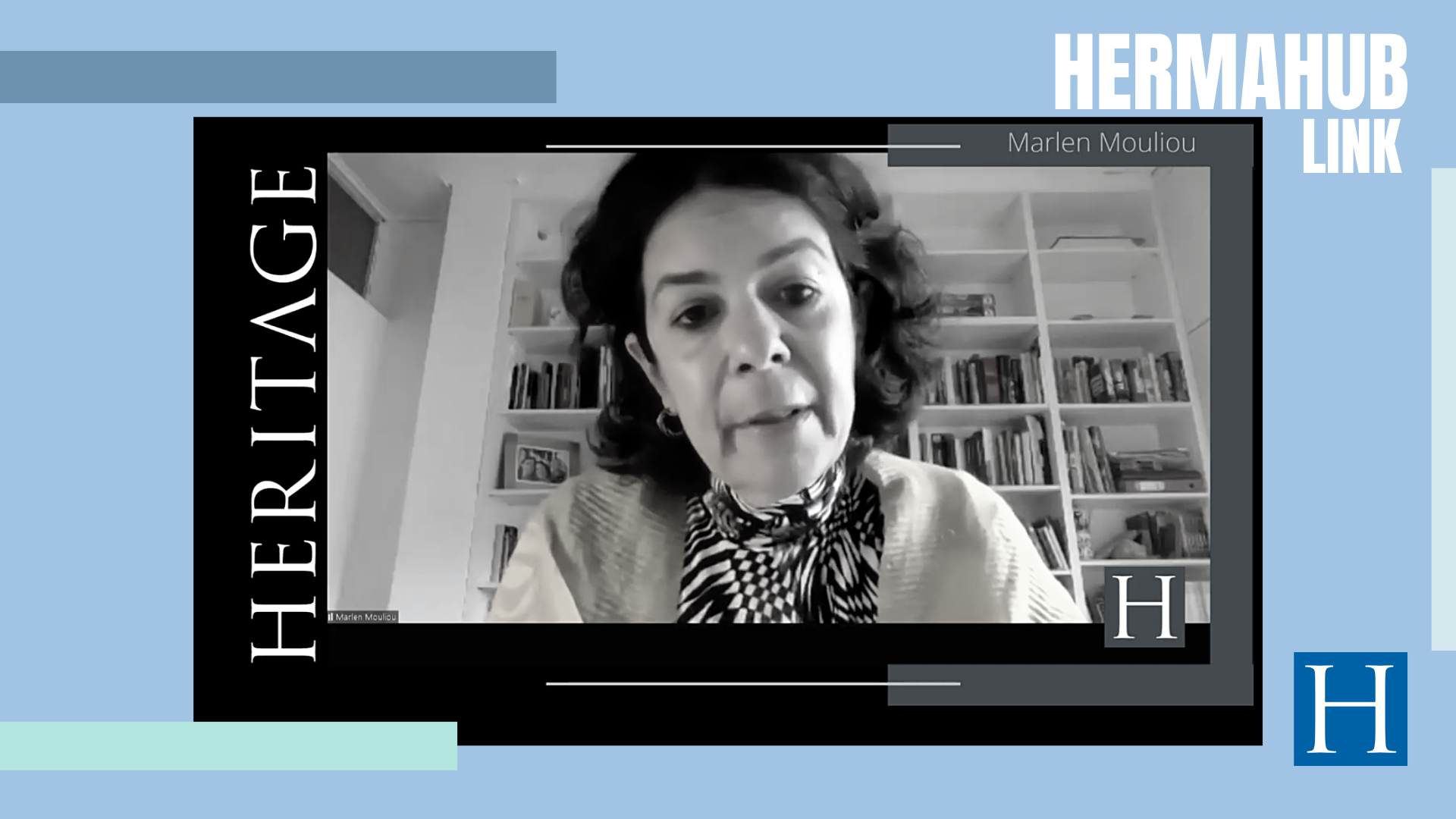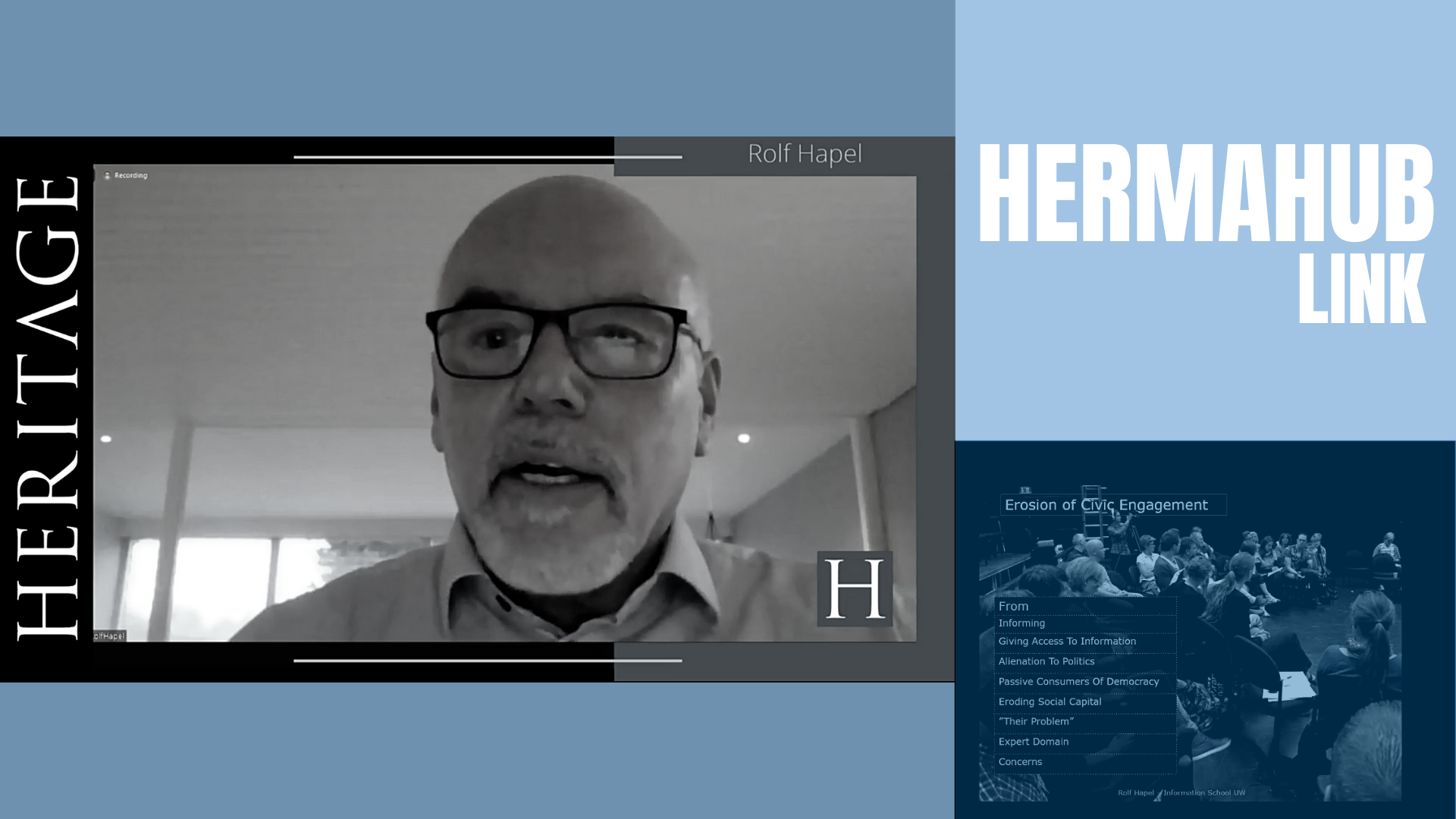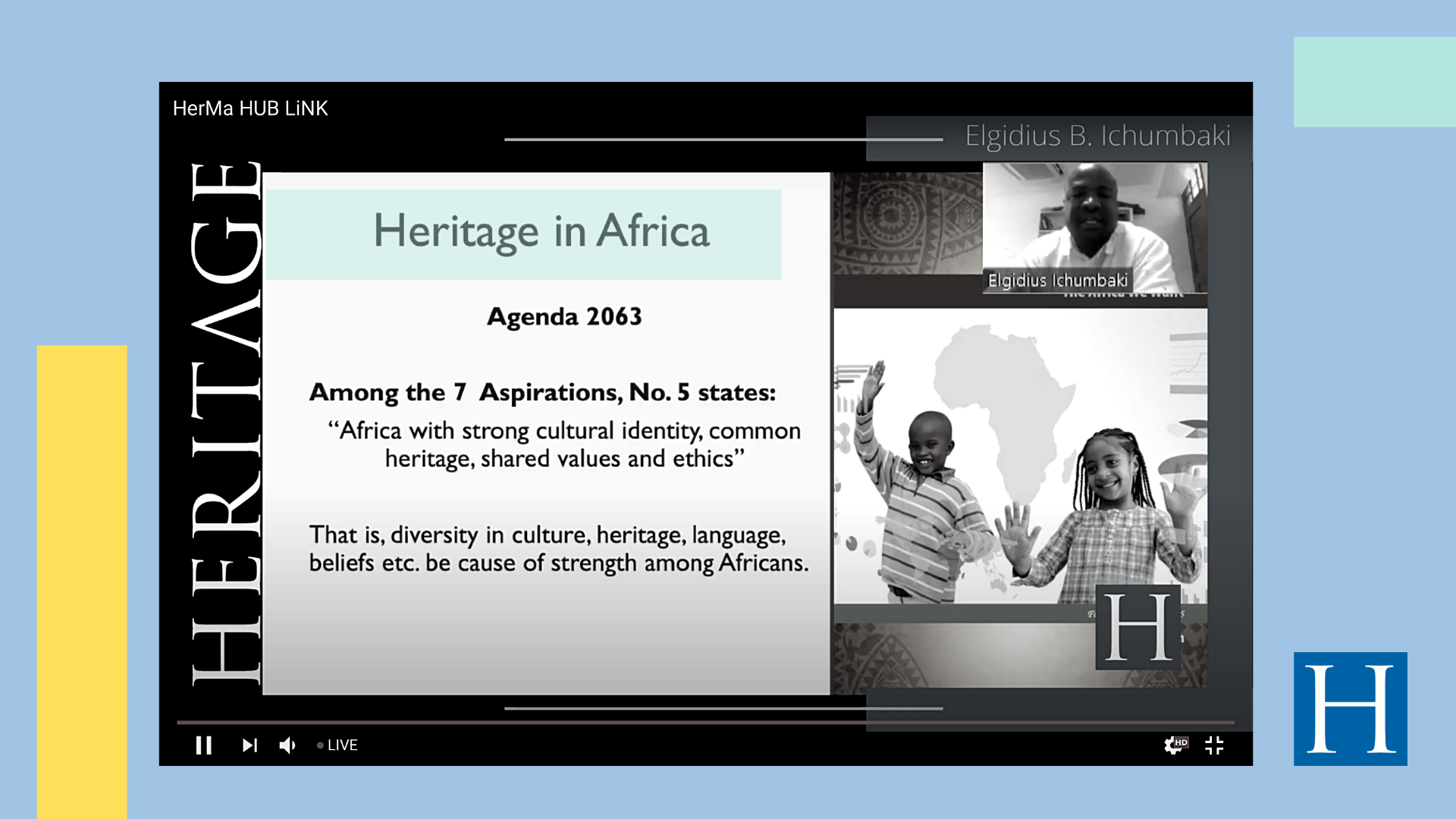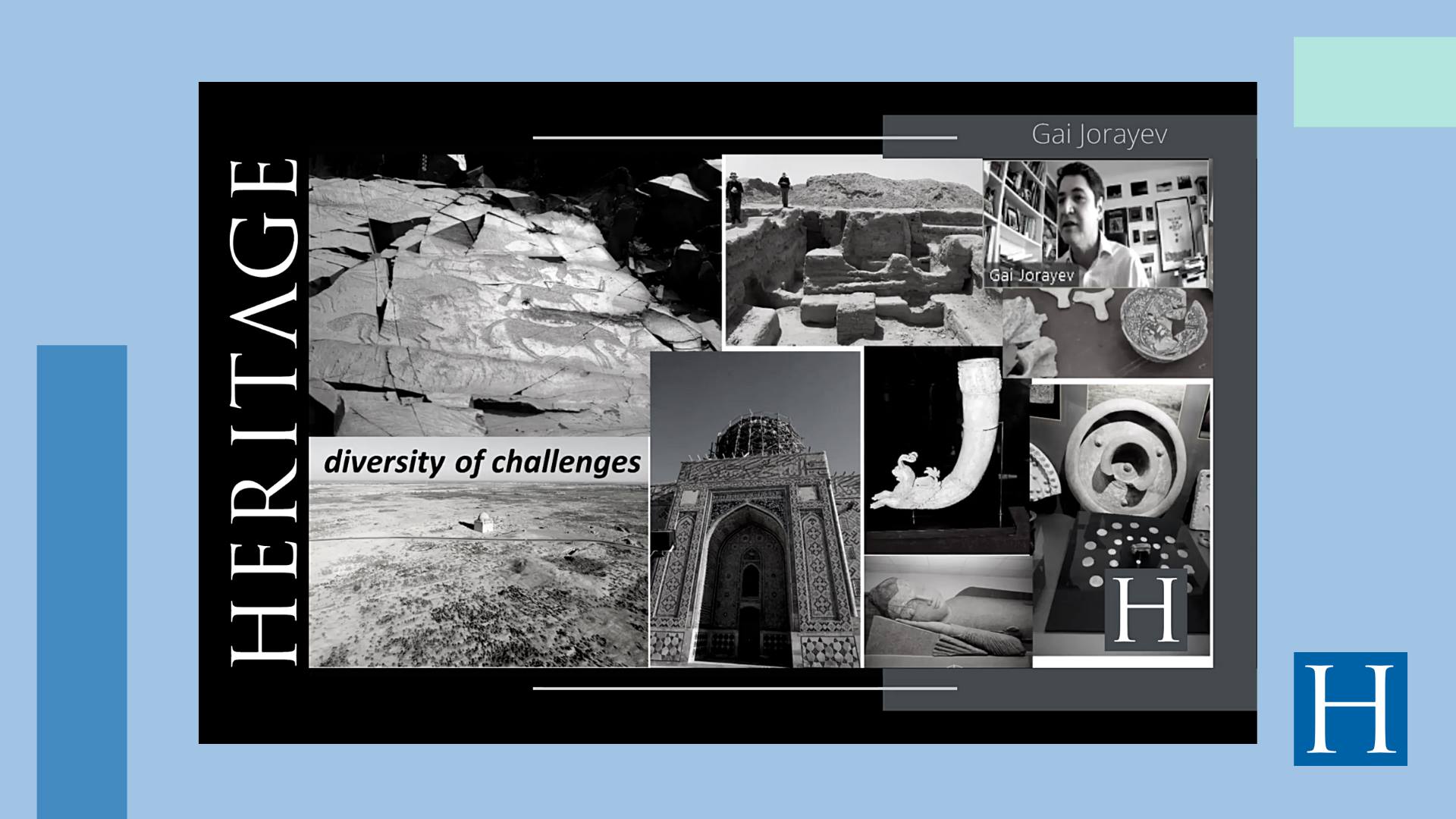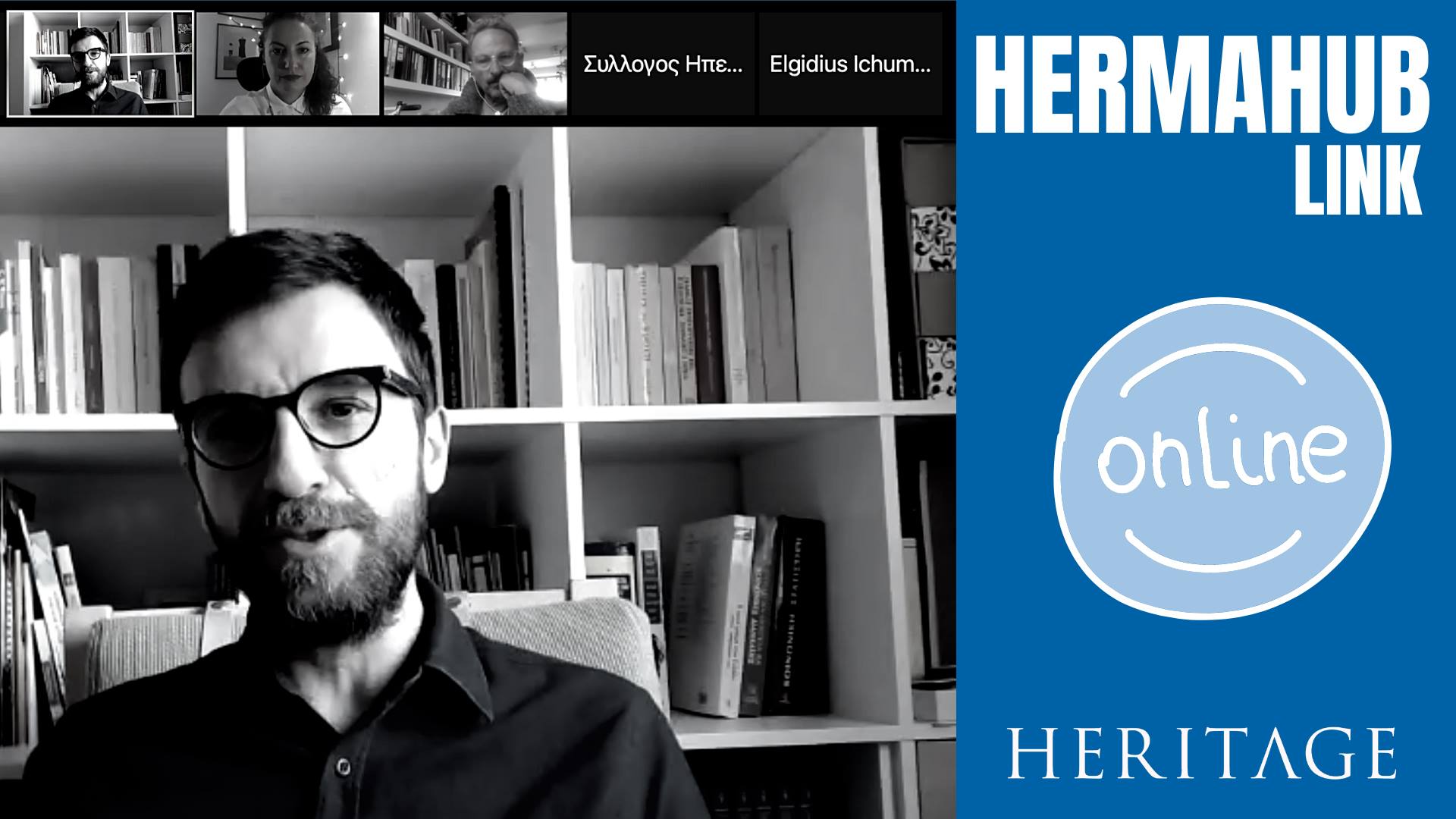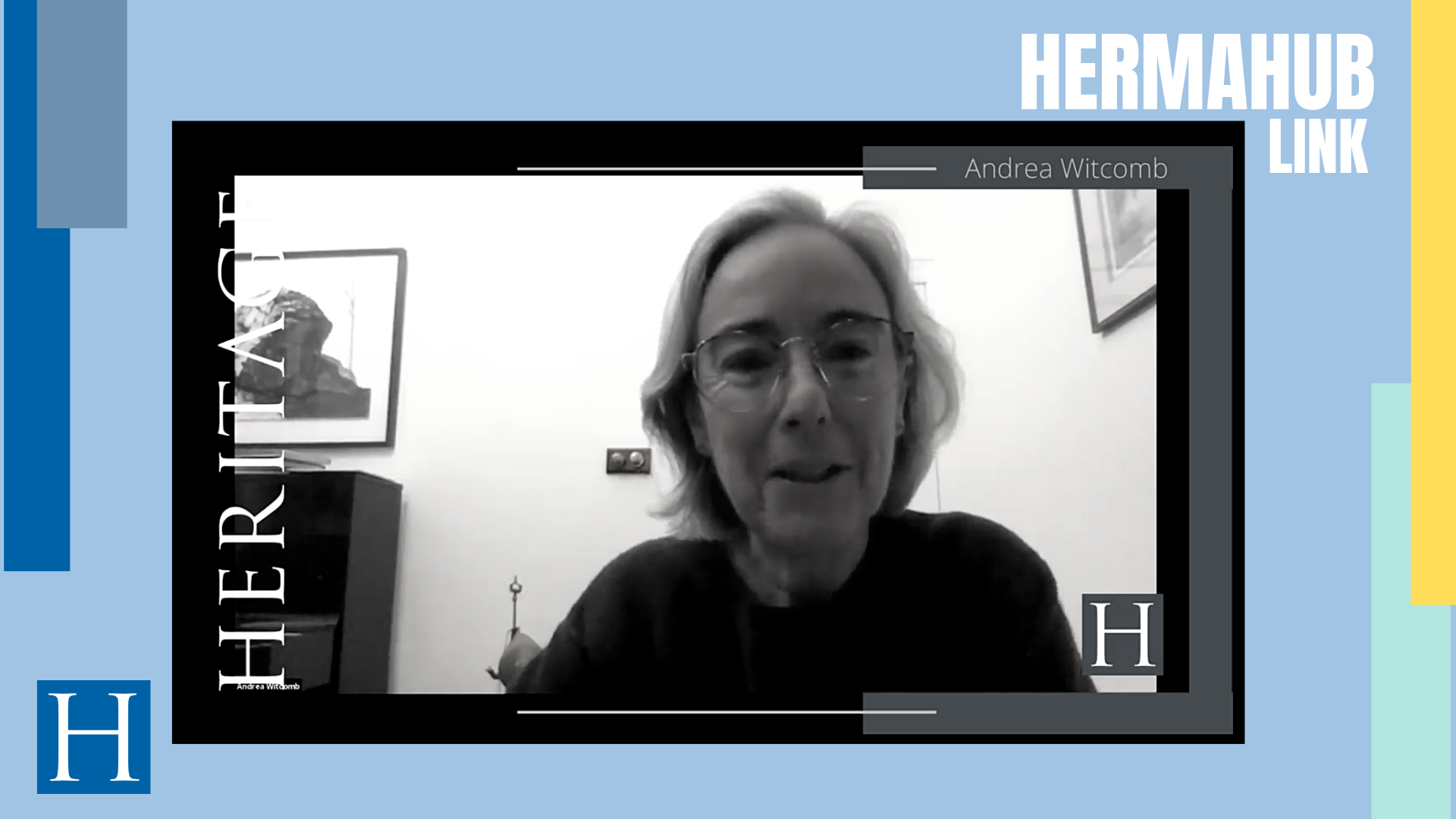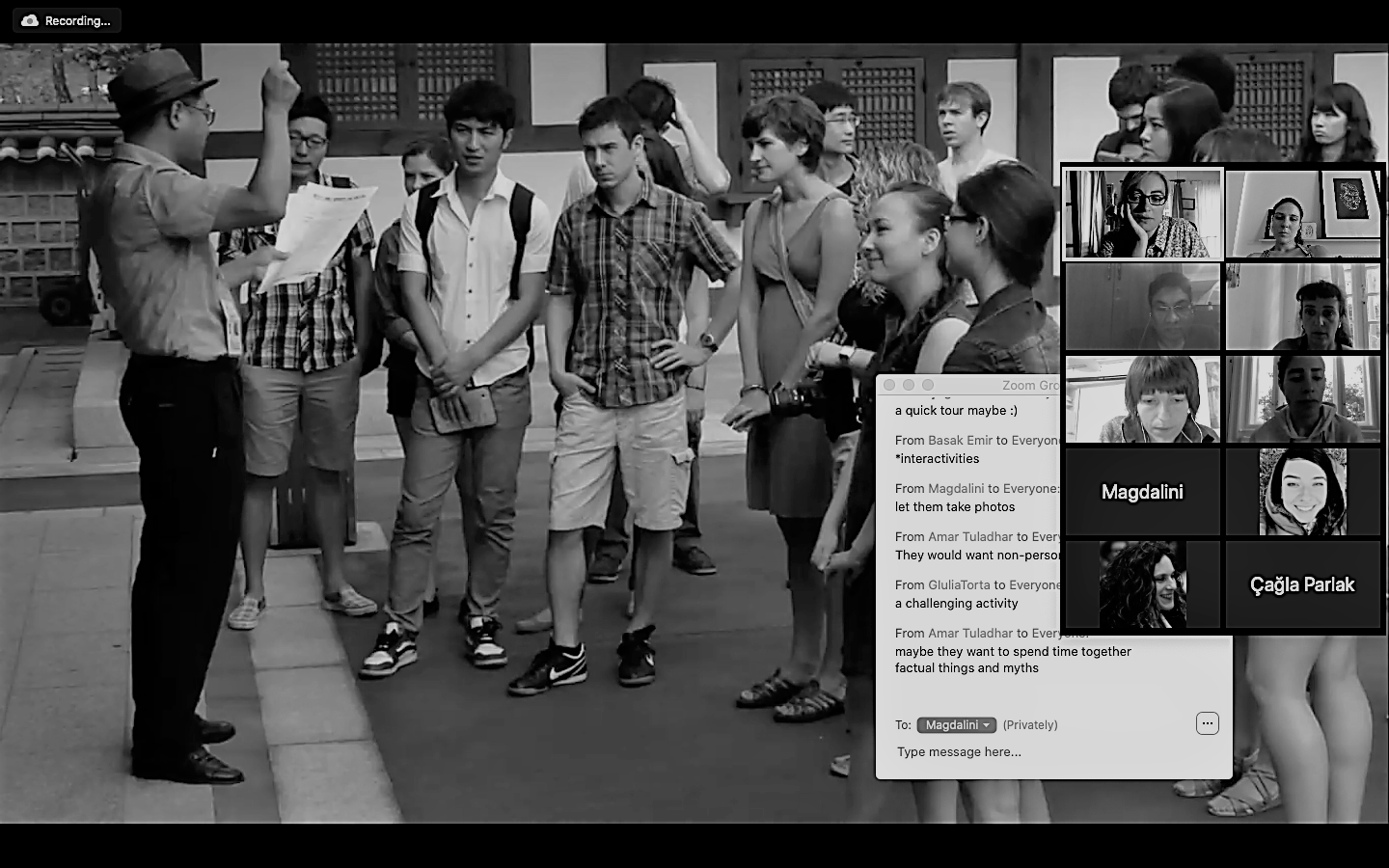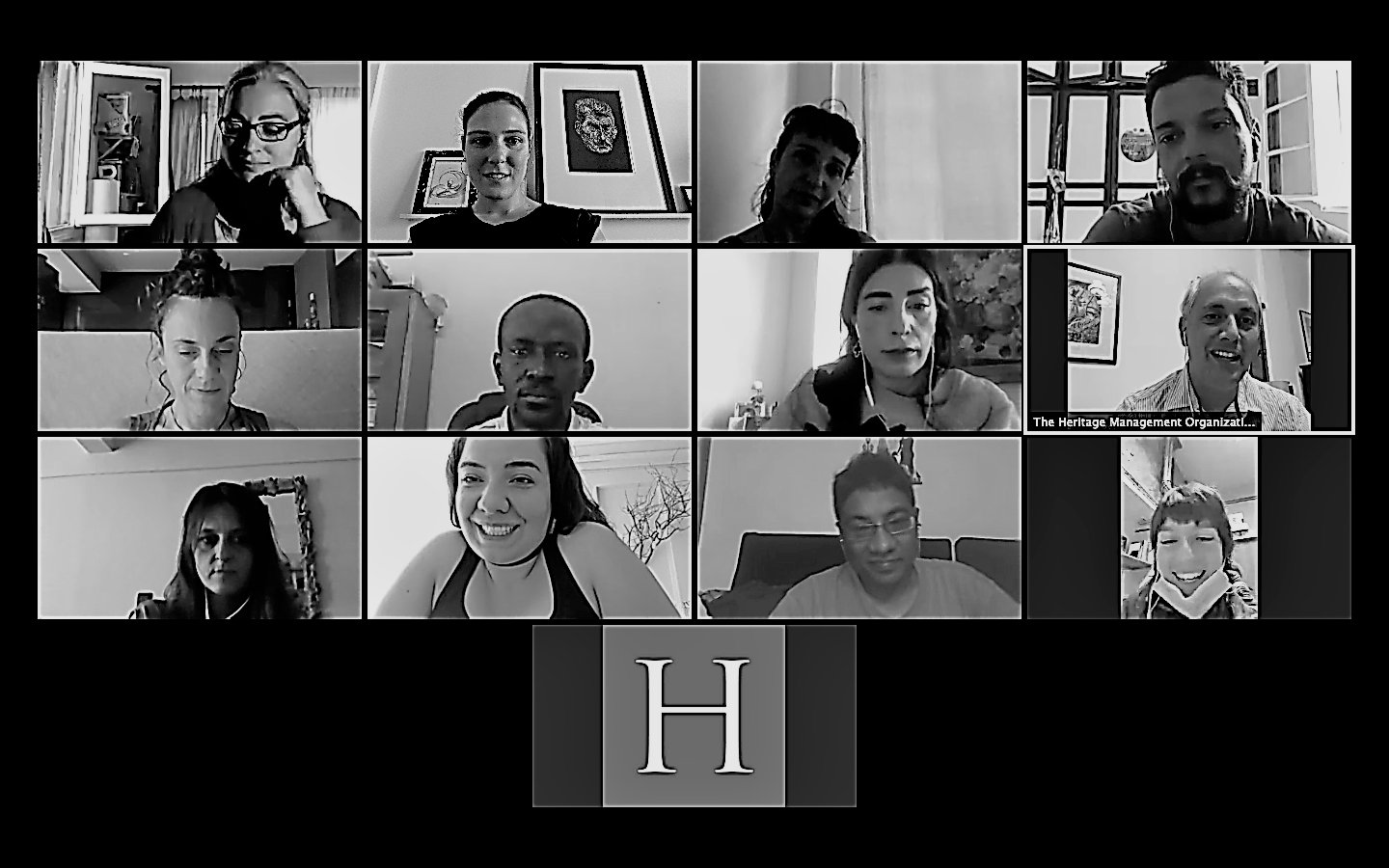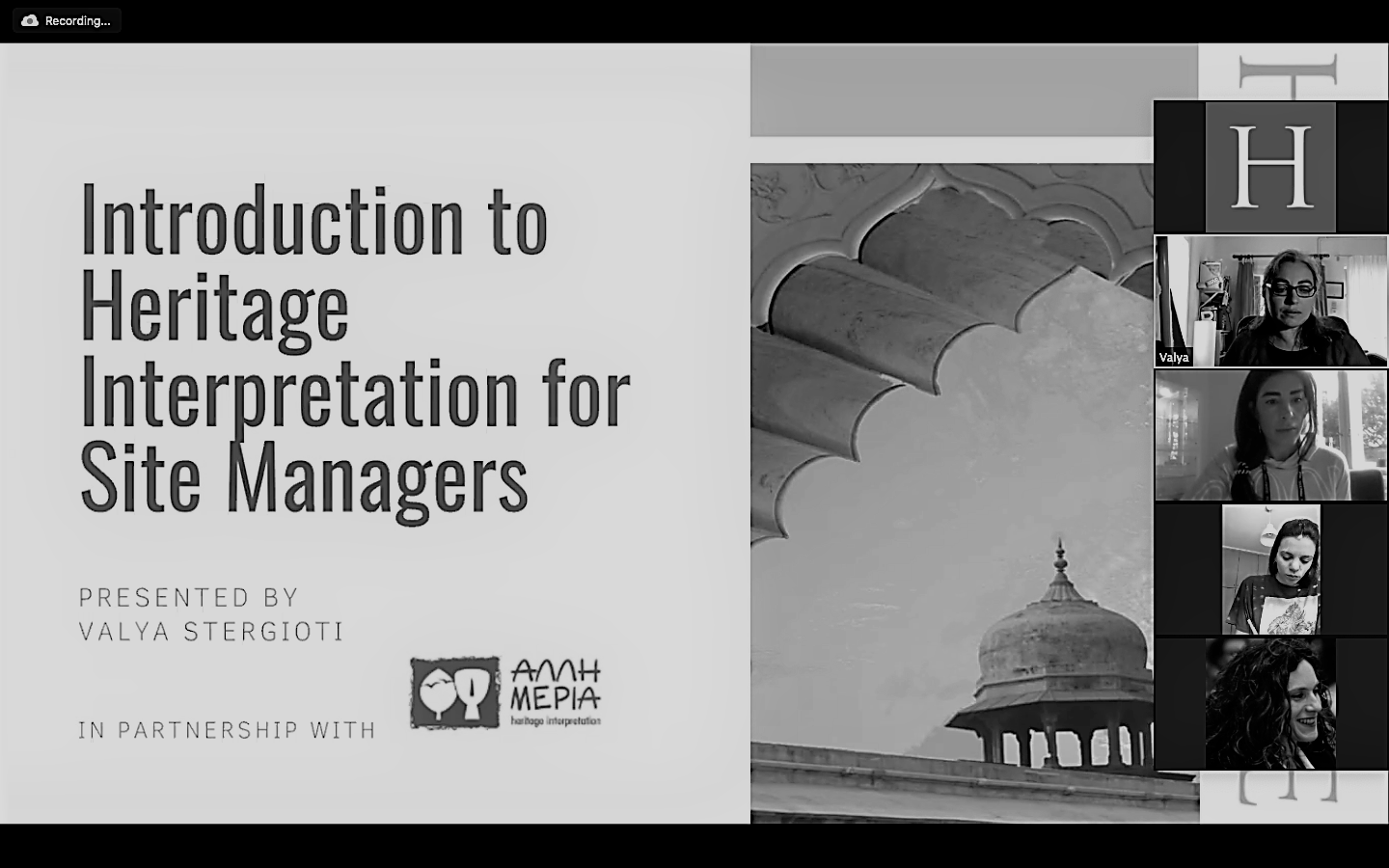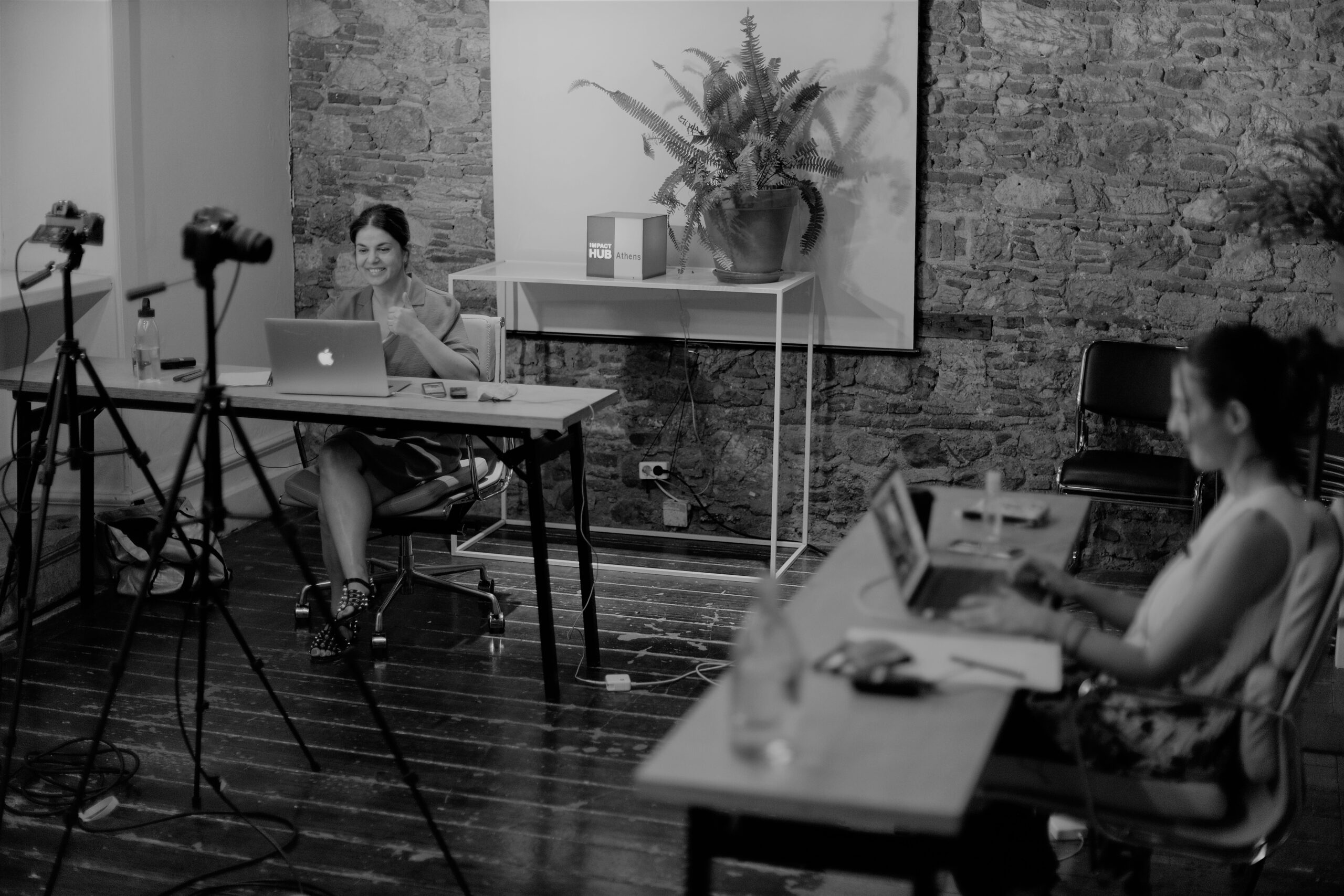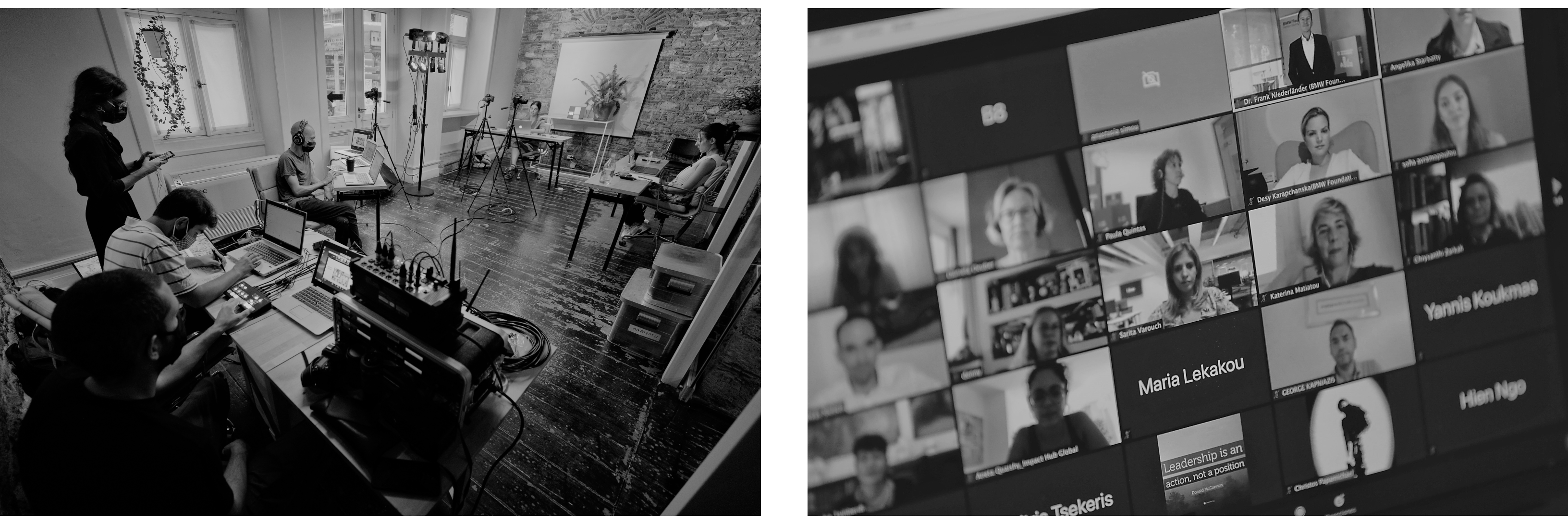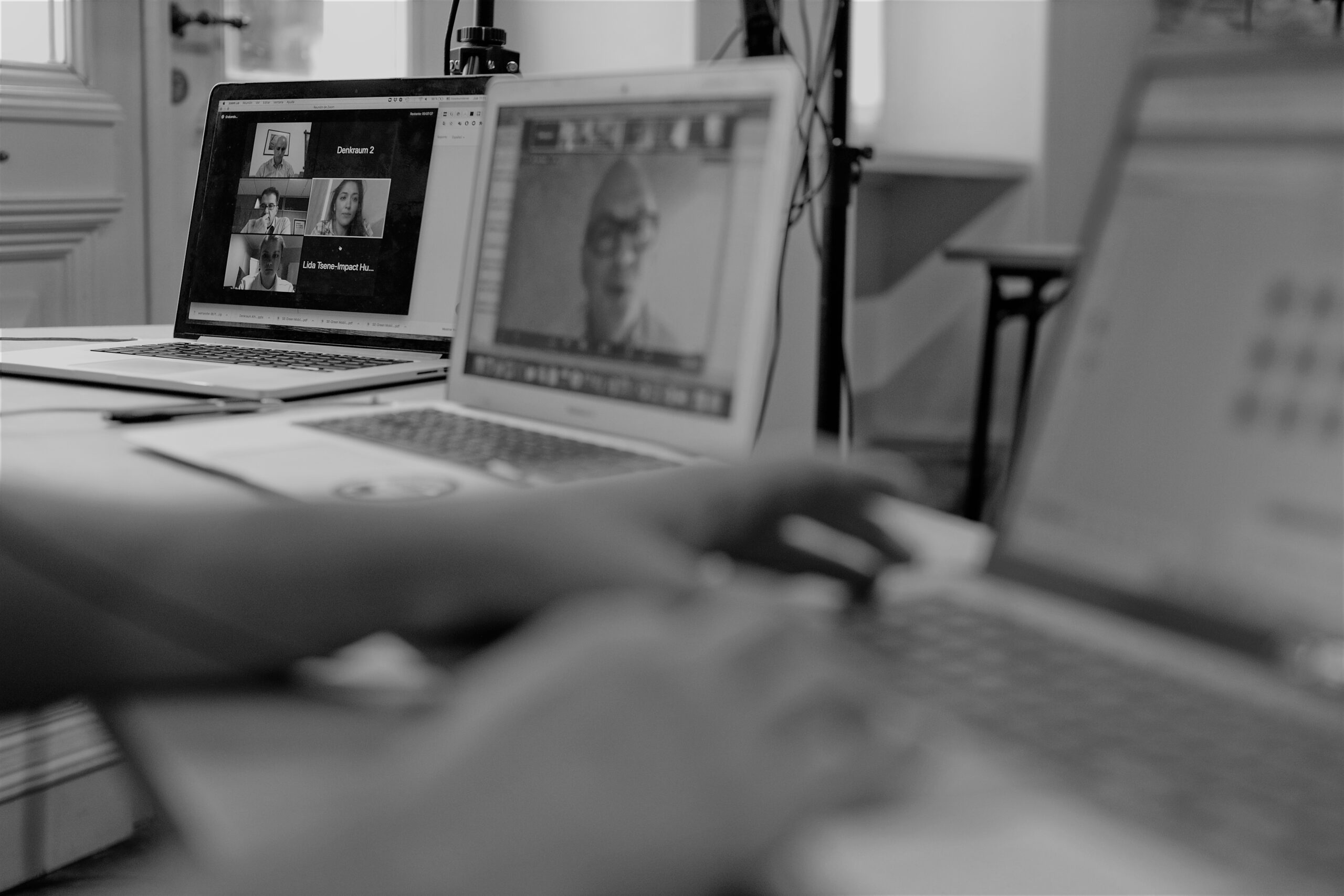: Uncategorized
From the Authenticity of Monuments to the Narrative Continuity of Ηeritage Places in Cultural Tourism: A lesson from/for Samarkand
THE INTERNATIONAL SCIENTIFIC AND PRACTICAL SYMPOSIUM
“CULTURAL HERITAGE CONSERVATION AS A DRIVER FOR TOURISM DEVELOPMENT
DECEMBER 24 TASHKENT , UZBEKISTAN
Vassilis GANIATSAS, Full Professor, Architectural/Urban/Landscape Design and Heritage Management, School of Architecture-National Technical University of Athens-Greece, The Heritage Management Organization.
From the Authenticity of Monuments to the Narrative Continuity of Ηeritage Places in Cultural Tourism: A lesson from/for Samarkand
Dear Colleagues and Friends,
I’m glad to be invited in this Symposium at a distance, a follow-up of last year’s most successful “1st International Scientific and Practical Symposium”. I like the continuity in this kind of dialogue and exchange of ideas.
This year I have had already this firsthand lived experience of Samarkand, a city of legend and myth, which I witnessed as a real place. Thus, I can be more practical now towards addressing its potential for cultural tourism.
By paying attention to my personal experience as a cultural visitor, besides and beyond my professional expertise, difficult to tell apart but worthwhile, I was able to really engage with that place and enjoy its cultural significance and thus avoid the distance usually separating a professional expert from the object of his inquiry.
So, what exactly visiting Samarkand has to offer more than the exquisite images and virtual presentations that someone can have from thousands of miles afar? In our times of nearly perfect virtual simulations, what is the purpose of visiting the real place of Samarkand?
These questions become urgent and succinct in our times. After 9 months of travel restrictions in COVID times, we can best reflect on what we’ve missed in failing to travel to Samarkand. The pandemic accentuated to the extreme the difference between virtual and actual cultural visiting places. The prospect of a real, actual visit in a foreseeable future is the only consolation that makes virtual visits bearable.
So, what are we missing in failing to visit Samarkand? Why virtual visit substitutes are not enough? Why images, videos and virtual visits are doomed to be nearly perfect and never perfect ? Well, because with all virtual mediums you can be nearly there and not there, in place.
Before visiting Samarkand last year, I went through many images and narratives of Samarkand. Images, like photos, videos and virtual reality representations that provided glimpses and partial views of the monuments and the land.
Narratives, like stories, legends, novels, and fictions of Samarkand, from Marco Polo to contemporary writers.
So, images are partial, incremental, and fragmentary, calling for a gestalt like perceptual and conceptual mechanism of completion in space and time, while narratives even without images approach a holistic sense, a full experience of place out of which many images can be accommodated as emerging out of reality.
These remarks on the difference between images and narratives, has severe consequences on the modes of experiencing heritage places. Do we experience a place as a sequence of images, as an itinerary of distinct celebrated monuments, or a living place in continuity with its past? In short, a real visit can be as poor as a virtual one, if we miss the holistic spatiotemporal reality of place that renders monuments as culturally significant in context rather than as isolated museum curiosities.
In my visit to Samarkand, after searching for images and delving into narratives, last year I had a personal experience of the Real Samarkand. My exclamation was: So, Samarkand really exists!
But beware, not any physical visit can function like that and engage a visitor to the cultural monument and its context. A physical visit can well be only a little more than a virtual one, if it fails to experience a place a whole, a place with monuments, or else monuments in place, and not just isolated monuments in space.
I’ve experienced such a holistic view of Samarkand, not just by the in-depth guided tours of the organizers to the exquisite and unique Timur monuments, but also by:
- Coming in touch with the local people, heirs and living carriers of the diachronic cultural continuum of Samarkand.
- Tasting the local cuisine as a token of local products, the fertile land, and the intercultural influences due to the silk route cultural exchanges.
- Visiting the local market which as colorful with spices and fruits seems timeless, in recalling oriental Bazaars through the ages.
- Visiting local craft labs and shops that keep valuable traditions going.
- Visiting the homes of people, especially the authentic local architecture, which connect the present day with local history.
I feel complete, not just because I managed to see enough monuments but mainly because I managed to experience many faces of the context that surrounds the monuments, which is not just a visual background for prevailing in size and significance monument, but rather the vital space of monuments, the fertile ground of their meaning. I managed in three days– it’s not always possible despite the good will and certainly difficult in such a short time-to establish a bond with the city and feel at home – sometimes addressing people in the street as If I could speak Uzbek.
This established bond acted, and still acts, as a constant reference not only for memories, but also for all that I missed and also for all additional information about Uzbek culture and Samarkand I keep gathering ever since.
Now, why these personal thoughts could be of use in articulating practical and useful planning and design proposals for the protection, enhancement, and management of Samarkand Heritage, as the main driver for cultural tourism and economic development?
Because I believe, we should reconsider, review, and change our current methodologies for the enhancement of monuments. In all proposals we should enhance heritage by preserving not just the celebrated monuments per se, but also the surrounding cultural context consisting of low-income housing, craft workshops, local markets and the local people. We should avoid spatial cleansing, erasement of historic and traditional neighborhoods for tourist-bus parking, urban gentrification by removal of craftsmen and substitution with souvenir shops, as well as any beautification or facilitation aimed solely to tourists. All these may result in Monumental Vacuity, as Michael Herzfeld, a professor of anthropology at Harvard called it.
Let’s make it conclude by some remarks specific for Samarkand.
- I fully agree with the reconstructions of Timur monuments. Material authenticity is important, but equally important is the building form authenticity and also the authenticity of its role as landmark monument.
- What I regret and urge you to avoid is the monumental planning of vast spaces around monument for tourist use only. I would not like to see in the future the Timur monuments isolated in space like gigantic museum pieces – I would rather opt for enjoying them in their context, perceptually, conceptually, and meaningfully.
- This sensitive planning should connect the Timur monuments and the city fabric to the archaeological cradle of Aphrosiab. This plan does not presuppose a complete reconstruction of the walls, but partial and incremental enough to enhance the form and significance of the ancient, fortified city.
- Traditional crafts facilities and activities should be encouraged to enliven historic and even archaeological places and activate monuments.
- Cultural routes could be planned and design to connect archaeology, history and contemporary living and then used by visitors also, not cultural routes just for tourism.
Along these methodological axes for mainly urban but also landscape and architectural and conservation planning and design, what I seek and argue for, is to safeguard narrative continuity and thus cultural significance of places, of Samarkand as a place and any other Silk Route city or natural location considered in terms of heritage place.
Continuity of experience is the ultimate proof of the reality of place, a cultural reality that represents the authenticity of the whole place considered as a monument at a bigger scale even to that of Timur monuments. We should turn our attention from the authenticity of isolated monuments to the authenticity of place that contains them. In Uzbek language, from the haqiqiy of monuments to the haqiqiy of heritage places.
Planning and Design should strive for, and eventually strike, a balance between conservation and development in order to achieve a potential for narrative continuity that could match the continuity of stories, legends and myths that Samarkand so much deserves to maintain, enhance and actually realize while being in place.
Samarkand, due to its legendary stature, deserves and should promise to offer to all prospective visitors the experience of a pilgrim, to be fulfilled only by visiting and experiencing its reality in place, or else, to be most regrettably missed.
Thank you – Rahmat
Read Prof. Ganiatsas full speech here or watch it here (1:38:27 – 1:57:45 & 1:58:35).
Network Stories | David Nkusi
Describe your organization and the unique work that it is doing. Who and what are affected by the work? How does/will the work impact people’s lives
First and foremost, I’m affiliated to the Institute of National Museums of Rwanda (INMR), a government entity that was founded in 1989. The Institute is home to eight (8) museums across the country.
Our MISSION: To collect, preserve, research, and present Rwandese past and present cultural and natural national heritage.
VISION: To provide museums and heritage sites around the country with a platform for educating and exposing Rwandan Cultural and Natural richness.
The Project: NYANZA CULTURAL TRAILS
INMR is currently involved in promoting cultural tourism in the country with a pilot project in Nyanza District, Southern province of Rwanda. The cultural trails, dubbed “Nyanza Cultural Trails” are unique in Rwanda as they are circular in nature and connect a variety of historical (heritage sites, museums) & natural landmarks (wetlands, green hills) in the ancient capital of Rwandan Kingdom.
This development is a joint initiative between the Institute of National Museums of Rwanda (INMR) and Eco-Emploi program of GIZ, supported by Senior Expert Services (SES) from Germany. The project aims at diversifying tourism in Rwanda and adding more touristic value to Nyanza as a Destination Managed Area (DMA) and not just a transit hub.
Why circular trails:
- They are economically viable & connected to a variety of tourism businesses and attractive locations with splendid panoramic views
- The hikers visit for pleasure & stay for more days, getting authentic experiences in Rwanda
- These are premium certified routes with good security & in good condition.
THE ROYAL TRAIL
The ‘Royal Trail’ is a cultural route at the European premium level with maximum variety. The trail is a unique, outstanding 10 km route which offers hikers experience in a compact manner; combining history, culture and Rwandan rural life. 10% of the paths in the urban areas of Nyanza are on asphalt, 30% of the route is path and 60% of the route is on pleasant dirt roads. The Royal Trail connects Nyanza with the sites of the historic Rwandan royalty in the surrounding area.
Cultural history: The former Royal Palace-now the “Home-Grown Solutions Museum” built in 1959 by King Mutara III Rudahigwa and the Kings’ Palace Museum built in 1932 are some of the outstanding landmarks along the trail. The replicas of the ancient historical royal palace, the traditional royal cows “Inyambo”, the Mausoleum of the Kings of Rwanda, Christ-Church built by Belgium missionaries in 1935, all offer a unique taste to hikers.
Cultural landscape: Visitors experience the authentic Rwandan town, village and country life with different houses, agriculture and livestock. They also see the centre of Nyanza with a market and the African Art Museum.
Cultural ambience: Some houses are painted with traditional ornaments. This cultural beautification of the facades is great attraction for tourists.
Nature: There are two lakes, wetlands numerous stunning viewpoints.
THE BIG-VIEW TRAIL
The ‘Big View’ trail is an 8km long trail that leads to Remera hill from Nyanza District. It extends the experience of the premium trails in Nyanza with impressive views from the hill over the surrounding countryside. The trail leads around the top of the hill and hikers can enjoy a 360-degree panoramic view over more than 50 km. For the first kilometre, the route runs parallel to the Royal Trail, however, at the beautiful Nyamagana Lake, the Big View Trail branches off to the right and leads to the mountain community path between houses and agricultural land. The ascent of about 100m leads hikers through a small forest.
Both the two trails (Royal & Big-view) were launched and certified as premium trails by the president of German Hiking Institute on 3rd/12/2019.
The project is directed towards community empowerment in social-economic welfare. Local communities and investors are mobilized and trained to tap fully into tourism related products that attracts the hikers. The economic impact to this benefits directly the local people in the District, especially the service providers.
Tell us of the project that has benefited from the training from you received from us? Why was the project important? Was there something unusual or surprising about the execution of this project?
BOOK PROJECT: Heritage Sites Documentation
After completion of my M.A in Heritage Management at University of Kent/Athens University of Economics and Business (AUEB) in 2016/2017, as a Heritage Sites Manager at INMR, myself, together with colleagues from the Research and Publication unit embarked on country wide research survey on different sites (cultural & natural). We managed to identify and document over 150 heritage sites into a book entitled, “RWANDA: AMATEKA Y’AHANTU NDANGAMURAGE” literally meaning; “RWANDA: THE HISTORY OF HERITAGE PLACES”
This book is written in Kinyarwanda but not yet either printed or published due to limited resources with reference to the quality of what was to be printed. Besides this hiccup, we also hope to translate and print the book into three languages; Kinyarwanda, English, and French.
The project is very important in that the identification and documentation of these heritage places was the first step towards the management and conservation planning processes. Secondly, it has led to the diversification of tourism products in the country with more emphasis on cultural tourism. Local entrepreneurs, especially tour operators have tapped into this, and have prospered. Many public and private institutions in Rwanda with tourism aspect in their action plans have got particular interests in promoting these heritage places through cultural tourism.
With the expertise gained from my master’s degree at Kent/AUEB, the project was no surprise to me because I was fully equipped to let no stone unturned in managing and planning for heritage sites in Rwanda. Rwanda is home to more than 500 heritage sites and I believe with time and given the resources, they will all be identified and documented.
Has your organization worked on any other projects that are innovative, globally significant and can be replicated in a local market?
Yes, INMR has worked and is still working on various projects;
- Richard Kandt Trail Mobile application: This application brings together over 15 heritage sites with a historical bond to Richard Kandt, the first colonial resident in Rwanda. It is a tour guide application that is used by tourists in the country
- Southern heritage corridor web map: This also captures outstanding heritage sites in the Southern province of Rwanda. The web map too, is to offer tour guidance towards these attractive landmarks.
- Site excavations at Rubengera: This was formerly the Royal residence of King Kigeli IV Rwabugiri (1874-1895). The excavation was a success with outstanding finds; the three traditional pots that were used then for rituals during war expeditions. Besides the excavations at the site, the long term project is to have the site fully restored.
- QR Codes project: This is specifically to be designed for heritage sites by adding links and useful information to enhance the visitor experience of the sites. QR codes (square barcode links that take the user to a website) will be added to the interpretive panels. These links will direct the visitor to extra material that would otherwise not be available at the sites, like videos or other media. Most of the media will already be available on INMR’s social media– videos of dancers or other traditional practices, etc. This project will enhance the information presented at the sites, demonstrate the various uses of ICT in African heritage, and show that the trails are truly Quality Trails.
What are the global issues that your project addresses (eg.., fighting climate change, preserving heritage and culture, promoting local participation)?
Two things involved;
- Preserving heritage and culture
- Promoting local participation and tourism in general.
The cultural trails in Nyanza are a boost to already-established tourism products in place. Local communities living along these trails are mentored into CBTE’S (Community Based Tourism Enterprises) and trained to be innovative and creative in tourism related products. All this, is to bring closer the communities in a transformed version as partners.
Local investors are mobilised to set up business that attracts hikers along the trails.
"Project Management for Heritage Managers" online workshop
The workshop on “Project Management for Heritage Managers” took place from 09 to 11 December 2020.
11 heritage managers from Africa (Rwanda, Gambia, Kenya) and Europe (Finland, Greece, UK) have been trained in project management techniques for running a successful project from inception, through the planning and implementation phases to closure. Through exercises and group work participants understood how to make sure they get their project completed on time, to the quality desired, and within budget, by proper planning and tight control. By the end of this training participants have learnt all the skills necessary to become a well-organized project manager.
The workshop was conducted by Tim Healing, who has over thirty years’ experience working as a project manager and has a professional background in project management, community and NGO development. He specializes in the coordination and support of cultural heritage and community based social action projects in the Middle East, North Africa and Central Asian regions.
HerMa HUB LiNK: Fostering Communities II
Building the ground for the future of community engagement
Why is the relationship between institutions and communities a fundamental one? How can institutions successfully develop participatory initiatives of community engagement? At our online roundtable “Museums, Cultural Organizations and Community Engagement”, which took place on Saturday 5 December 2020, 8 academics and practitioners with long experience in working with communities around the world, shared their projects and thoughts with a large audience from Greece and abroad, highlighting strong parallels, as well as unique differences that arise in community engagement practices in global and local contexts.
Eleni Stefanou
“Theory and practice worldwide is now moving beyond the logic of outreach from the institution to the public, and turns its scope to increased participation of social groups and local communities in the design and implementation of exhibition practices and cultural heritage strategies.”
Eleni Stefanou, Archaeologist-Museologist, Hellenic Open University, MSc Management of Cultural Organizations, HERITΛGE Public, opened the digital discussion with a welcome speech, highlighting the importance of seeking local answers to the global and timely question of working for or with the public, in relation to our ethical responsibility as culture and heritage professionals towards the people directly implicated in our projects.
Marlen Mouliou
Marlen Mouliou, Museologist and Assistant Professor at the National and Kapodistrian University of Athens, was the first to discuss about community engagement, underlining the importance of connecting and creating a digital community around Museums.
See more here.
Rolf Hapel
Rolf Hapel, Affiliate Instructor at the Information School of the University of Washington and former director of Citizens’ Services and Libraries and City Librarian in Aarhus Library, provided significant insight on how to build communities at Public Libraries.
See more here.
Elgidius B. Ichumbaki
Elgidius B. Ichumbaki, Lecturer at the Department of Archaeology and Heritage Studies of the University of Dar es Salaam, described the role of heritage institutions in fostering community engagements in Tanzania.
See more here.
Lejla Hadzic
Through the example of Cultural Heritage without Borders Albania, Lejla Hadzic suggests that conservation practices should be inclusive, empowering and equitable processes of encounter for everyone, in order to restore and build relations.
See more here.
Gai Jorayev
Gai Jorayev, Research Associate, Institute of Archaeology, University College London, explained how to grow influence of the digital platforms and improve connectivity to achieve higher levels of community engagement.
See more here.
Aris Anagnostopoulos
Aris Anagnostopoulos, Honorary Lecturer University of Kent and HERITΛGE Public Director, was moderating the discussion, feeding the conversation with his valuable input and participants’ questions.
See the general discussion here.
Andrea Witcomb
Professor Andrea Witcomb, Faculty of Arts, Deakin University, Melbourne, gave an inspiring closing speech and provided strategies for inclusion, asking us to think about how we represent communities in our museums.
Listen to the closing speech here.
"Introduction to Heritage Interpretation for Site Managers" Online Workshop
The Heritage Management Organization (HERITΛGE) organized a 3-day intensive online workshop from 2 to 4 October 2020 on “Introduction to Heritage Interpretation for Site Managers”.
10 heritage managers from Nepal, Iran, Turkey, Tunisia, Gambia, Greece and Italy have been trained in heritage interpretation, making visitors’ experience meaningful and unforgettable. Through interactive exercises, group work, presentations and discussions, participants learned how to turn phenomena into experiences, provoke resonance in visitors of heritage sites, offer paths to deeper meaning and foster respect for all heritage, as well as how to give and receive feedback to and from their peers.
The workshop was conducted by Valya Stergioti, a freelance interpretive trainer and planner. She has more than 20 years of experience in organizing and implementing interpretive workshops about heritage for adults and children. She works in collaboration with different NGOs and other institutions all over Greece and has more than 10 years’ experience in adult training.
Denkraum Athens: Re-imagining the future of sustainable cities
Denkraum: Sustainable Cities & Good Life, occurred in Athens from 6th of 9th of October organised by BMW Foundation Herbert Quandt & Impact Hub, in collaboration with Impact Hub Athens, Impact Hub Madrid & Amsterdam.
Combining digital & physical presence and together with distinct voices, Impact Hub Athens assembled a network of mindful individuals to co-inspire solutions for the current challenges in the domains of electric mobility, waste management, green infrastructure and zero emissions, investments in sustainability and resiliency in culture and built heritage.
Spaces of the City Fabric from the Heritage Management Organization
Athens City centre, especially after the multiple crises of the past few decades contains many derelict buildings, representing an architectural style that is unique in Greece. The Heritage Management Organization, owner of this challenge, represented by Evangelos Kyriakidis and Ioannis Trohopoulos, the discussion facilitators, directed thinking towards awareness of the issue and solutions for the use and financial development of derelict cultural heritage buildings in Athens.
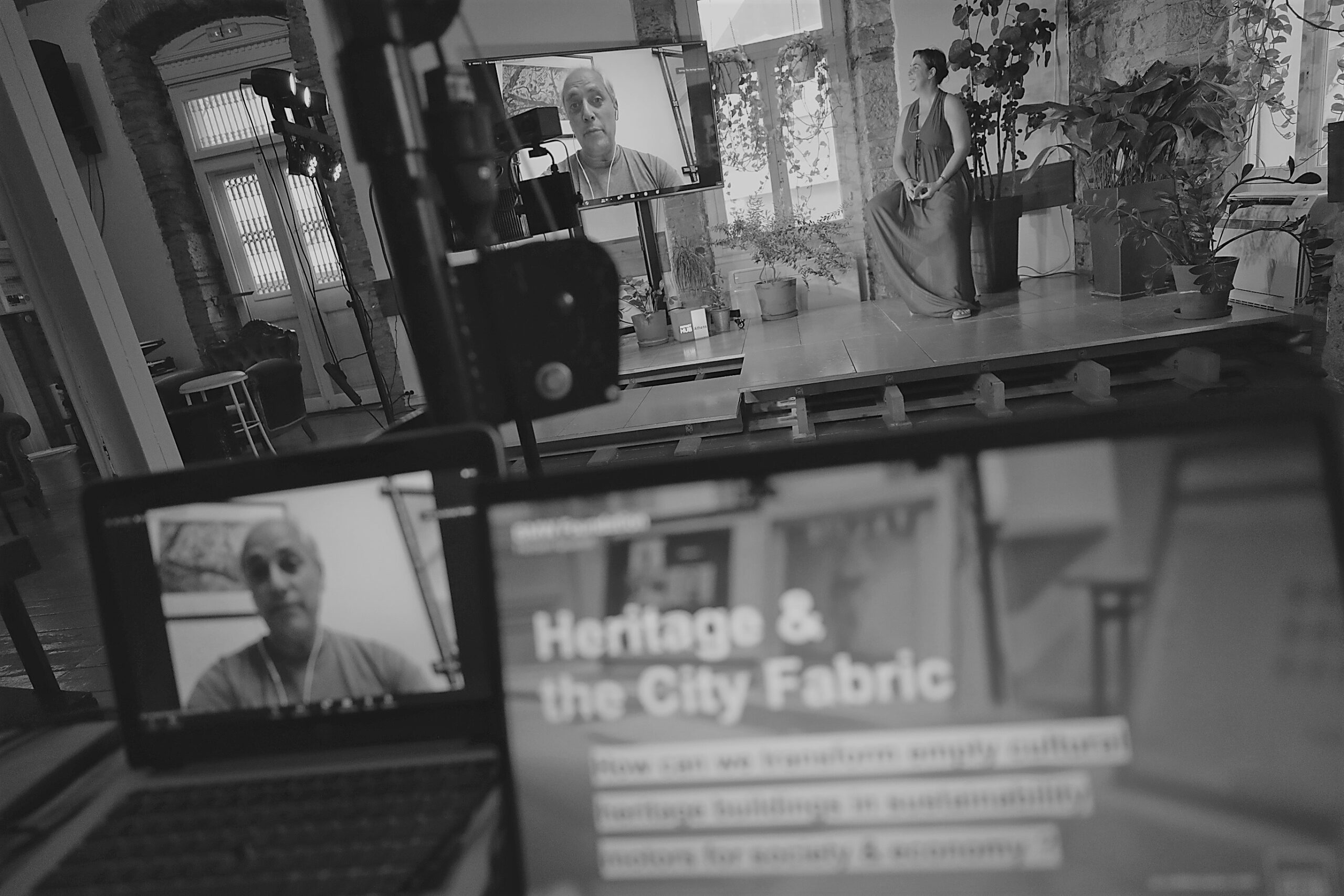
The deep dive and discussion proposed the creation of a registry of buildings and their potential uses, dissemination of information about them at the local level, and working together with local agents in the decision-making process for the buildings’ restoration and development.
Denkraum is a series of events organized by the BMW Herbert Quandt Foundation that first happened in 2016 in Munich. It strives to be a forum where influential local leaders are not only called to reflect upon modern challenges but also to propose realistic solutions and finally have an impact in creating a sustainable future for their communities. The Foundation cooperates with Impact Hub in several places in Brazil, Africa and Europe. The 2020 series, titled “Good Life & Sustainable Cities”, includes hybrid (virtual and live) events in Munich, Amsterdam, Athens and Madrid. The Athens-based event took place during the first week of October.
Read the full report here.

